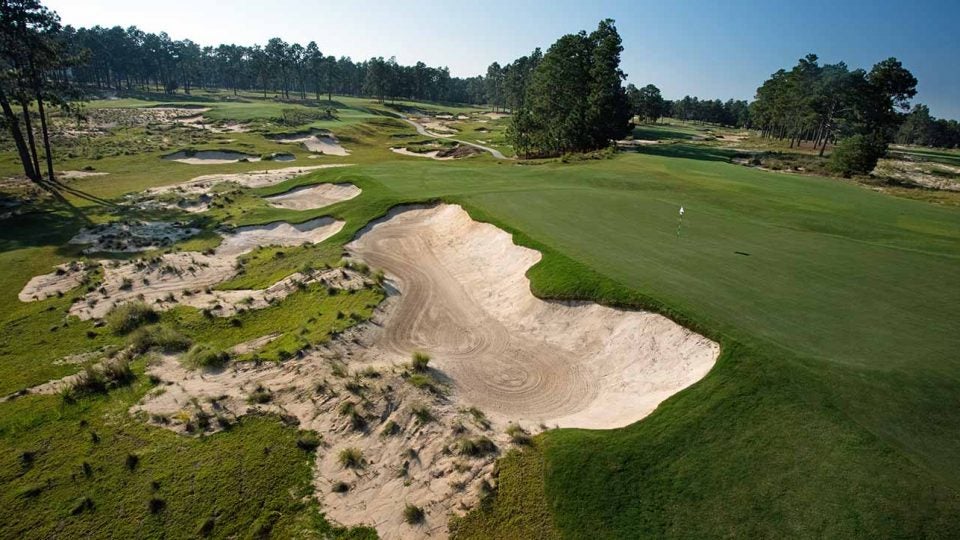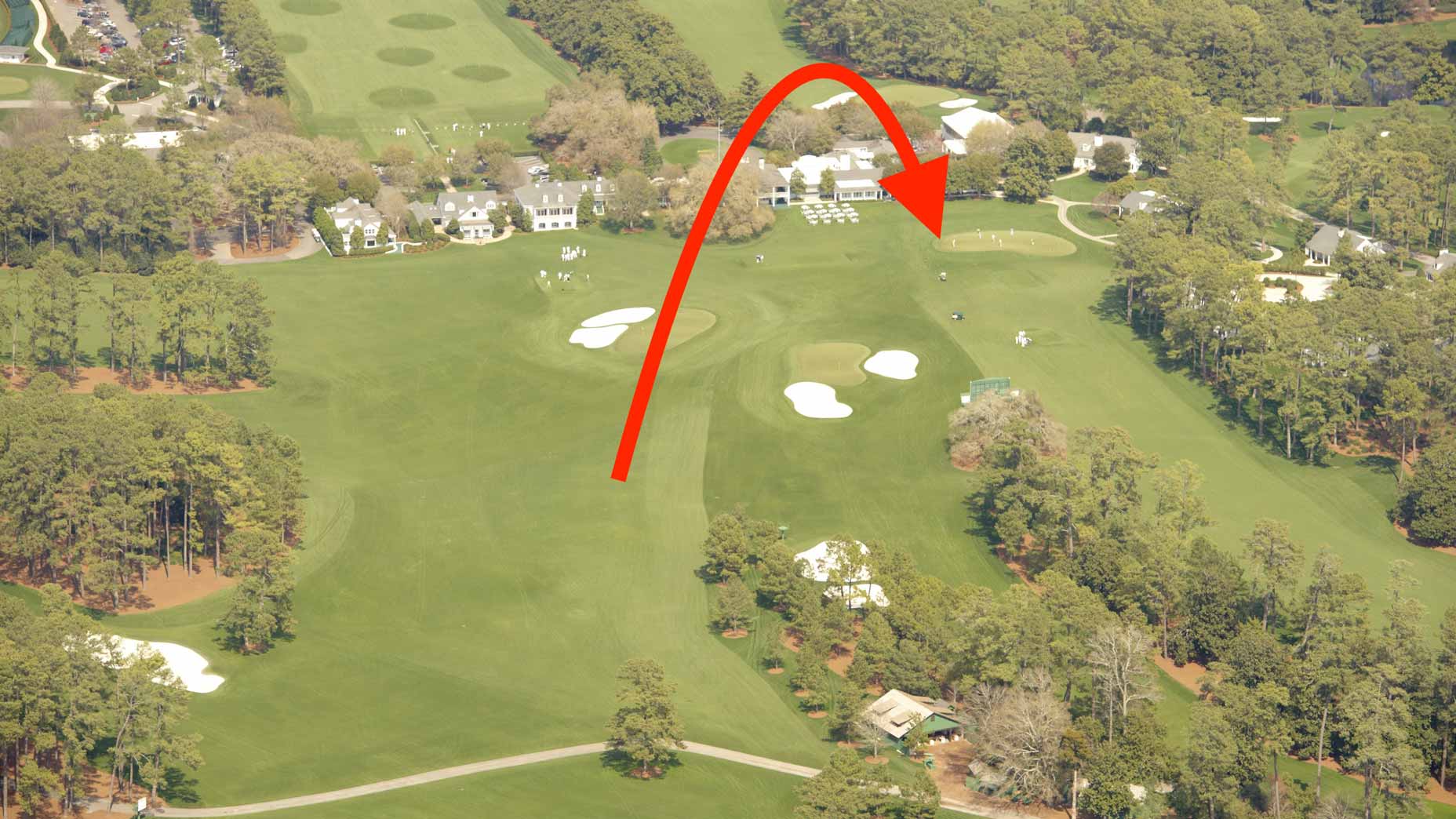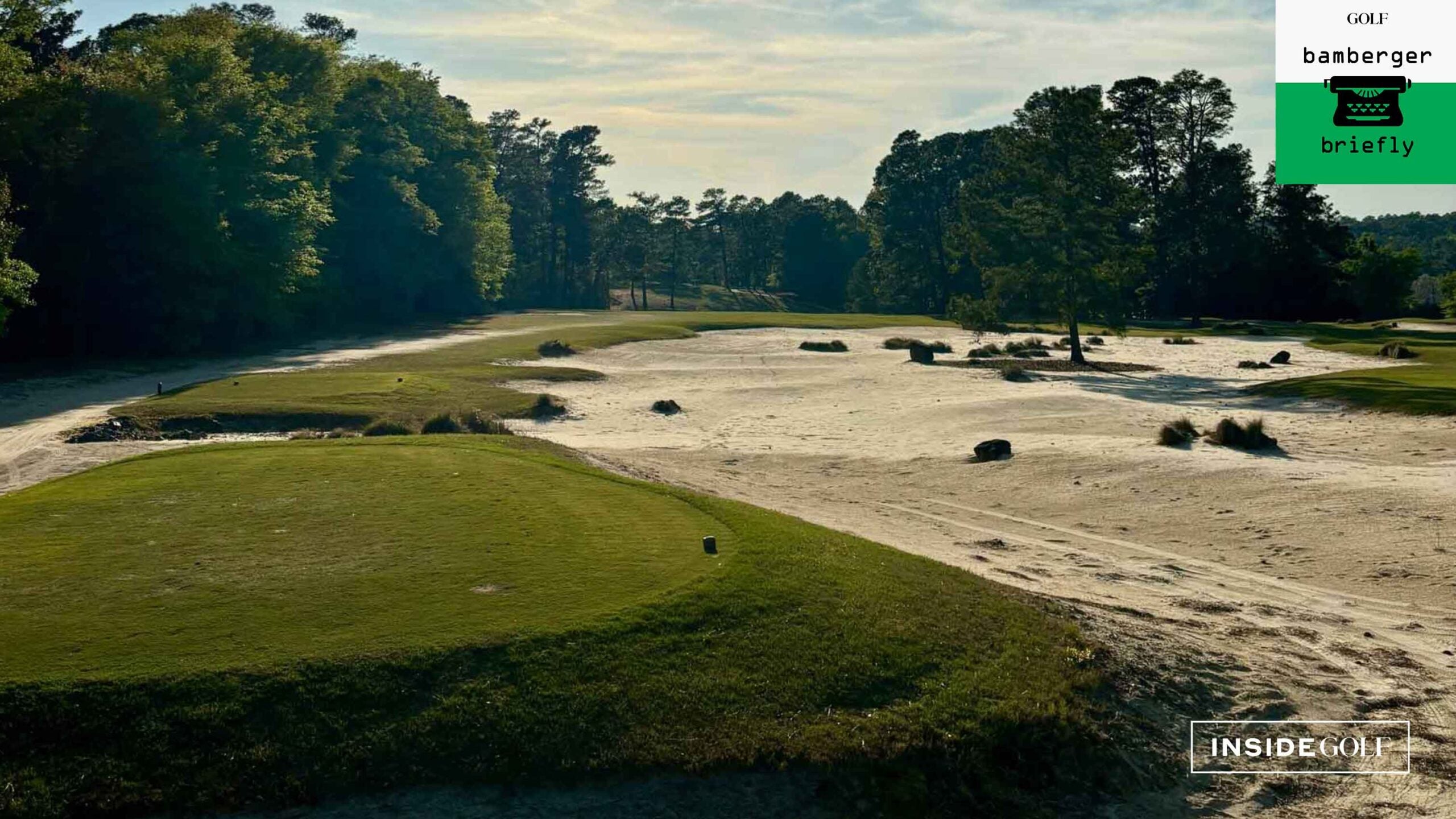Pinehurst Resort’s newest championship course, No. 4, opened today, even as surrounding communities are cleaning up and drying out after Hurricane Florence. Credit Pinehurst’s unique location in the Sandhills of North Carolina for a helping hand, as the subsurface provides for superior drainage. Still, it’s what you can see at Pinehurst No. 4 that’s most impressive.
For members, resort guests and day visitors, the latest version of No. 4 is nearly unrecognizable from its predecessors. Yet equally remarkable is that Pinehurst green-lighted the project to begin with. Architect Gil Hanse and his design partner Jim Wagner were tasked with replacing a very popular, successful course designed by Tom Fazio in 1999 that had been a reliable fixture in Top 100 public-access course lists. Prior to that, No. 4 was a 1919 Donald Ross creation that was abandoned after World War II and then a Peter Tufts design (he of the family that founded Pinehurst). Robert Trent Jones Sr. modified the Tufts layout in 1973, son Rees nipped and tucked in 1983 and finally, the Faz. Why change Fazio’s winner? Because they embraced the idea that great resort destinations are never content to stand still.
We're excited to show you the new Pinehurst No. 4, open today: pic.twitter.com/CbiTV81kkk
— Pinehurst Resort (@PinehurstResort) September 20, 2018
Pinehurst president Tom Pashley explained that the successful Coore-Crenshaw restoration of fabled No. 2 changed everything. In evaluating every asset, they realized that as respected as Fazio’s No. 4 was, the resort needed another needle-mover and one that truly encapsulated its location in the Carolina Sandhills. Hanse, Wagner and their team delivered in stunning fashion.
No. 4 will wow with eye candy—much more so than what its fabled sibling, No. 2, offers. Vast swaths of native, scrub-dotted sand areas now frame and bisect fairways. Gone are artificial pot bunkers, propped-up greens and gussied-up parkland features. Wider fairways are now in place that take full advantage of the most interesting undulations at Pinehurst. Hanse’s team stripped the old course, took the site back to its original aesthetic and created the design features from scratch.

So is Pinehurst No. 4 a redesign, remodel or an entirely new layout? Hanse’s own design renderings call it a redesign, but these days, he’s singing a different tune. “Even though it’s on the same piece of ground as the old Course No. 4, it really is a brand new course,” Hanse told me.
Perhaps the most illustrative example of the transformation took place at the par-5 9th. Fazio’s version featured 25 pot bunkers sprinkled liberally throughout. Hanse’s new version sports a massive cross-bunker hazard, a la Pine Valley’s “Hell’s Half-Acre,” that influences play on the second shot. Carry the hazard at its farthest point and you’ll be rewarded with a better angle for the third shot. It’s dramatic, strategic and fits the terrain beautifully.

Hanse is careful to pay homage to No. 2, claiming that No. 4 is a good companion in terms of the landscape, but maintains that it’s far from a tribute, at least from a design features standpoint. Indeed, unlike No. 2 and its infamous crowned greens that repel imperfect approaches, No. 4 assists with friendly kick-slopes that direct shots onto the low-profile greens. At 7,226 yards and a par 72, it’s a strong enough test to serve as a co-host at the 2019 U.S. Amateur, yet it’s poised to be the most fun layout at the resort for every class of player.










